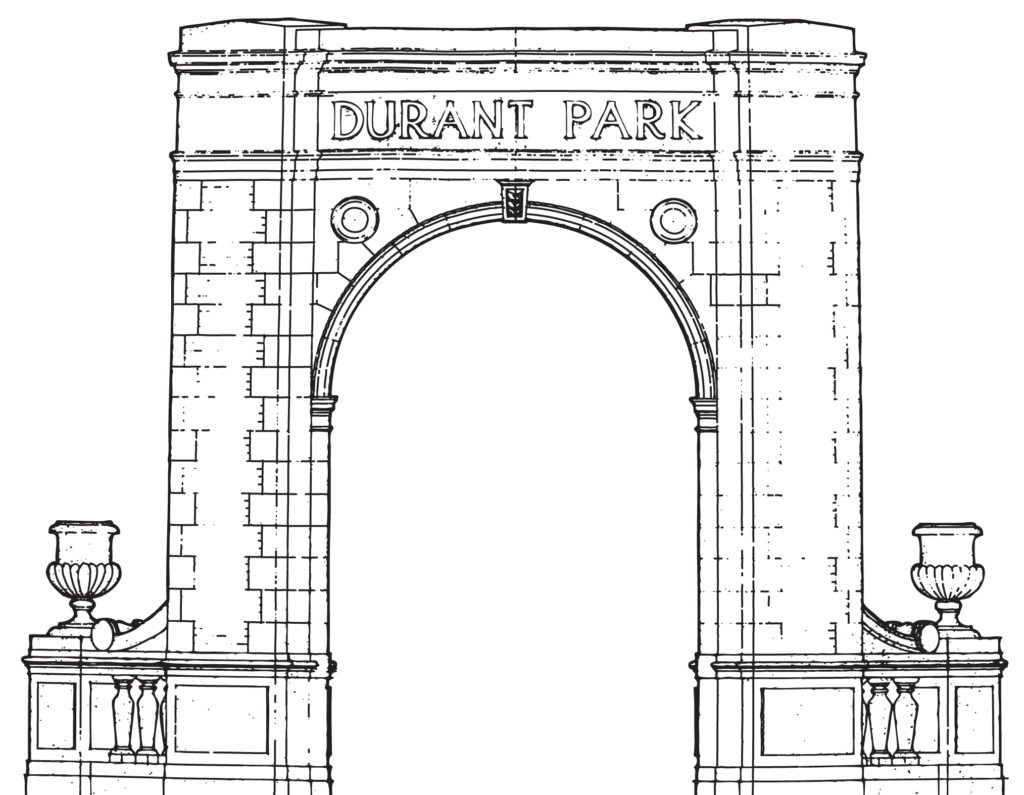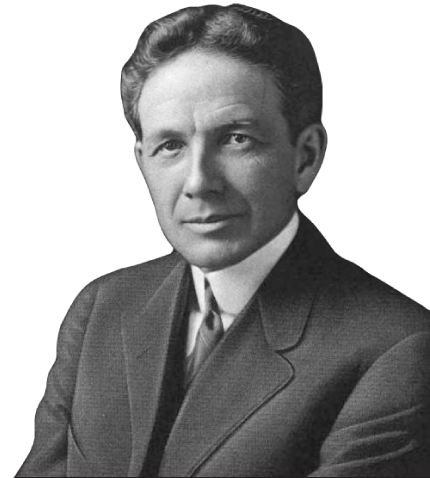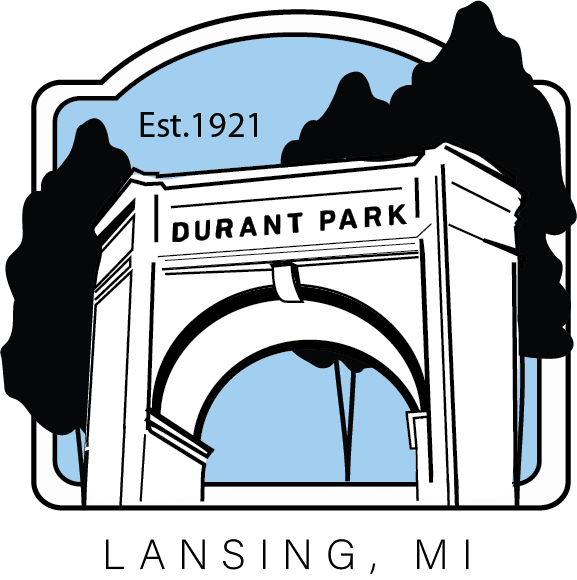The Early Days
The history of the park site began in the late 1840s when the neighborhood was occupied by pioneer businessmen and merchants who built spacious homes. Mortimer Cowles, a prominent businessman, began to purchase an entire block from various owners to build a grand home for his family. The house was built of brick in the “villa or southern style of architecture” with a cupola on the roof.
In 1910, Mr. Cowles died and left the house to his two spinster daughters who were unable to maintain the property. It became overgrown and blighted.
The city attempted to buy the property in 1911, 1916 and 1917 for park use. The vote was defeated all three times. Citizens wanted city funds spent to improve the roads rather than acquiring land for urban parks.

Durant Sees Opportunity
By 1920 William Crapo Durant had severed his relationship with General Motors, the company he founded, and was establishing factories throughout the United States and overseas to manufacture a diverse group of his own automobiles.
On one of his trips to inspect his new factory on Verlinden Avenue, Durant saw an opportunity to contribute to the city that welcomed his new manufacturing plant, the Durant Motor Car Company.
Durant made arrangements to purchase the Cowles block for $100,000 cash. Soon after, he hired the well-known Kalamazoo landscape contractor Charles Andrew Mason to clear and transform the property into an urban park at the cost of $50,000. Durant then gave the park to the City of Lansing on March 22, 1921. His only request was that it be named Durant Park.
A Grateful City Responds
As a token of gratitude for Durant’s gift, the city paved West Saginaw Street and ran roads and sewers to the new Verlinden plant where Durant and Star automobiles were being manufactured.
Upon receiving the donation of land from Durant, the city raised funds privately and constructed the Memorial Arch in the southeastern corner of the park. It still stands on the corner of Washington Avenue and Saginaw and serves as a reminder for future generations of Durant’s valuable gift.
DID YOU KNOW?
Durant was a remarkable entrepreneur. Walter Chrysler once said of Durant, “He could coax a bird right down out of a tree.”


